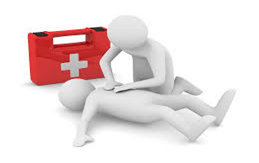The best way to learn first aid is to complete a formal course with qualified trainers. These courses are usually conducted by a first aid training organisation and can be found online or in person. The courses cover everything from basic life-saving steps to more advanced care. They also teach you how to use medical equipment such as Automated External Defibrillators (AEDs) and Oxygen tanks.

Many people don’t realise that what they do or don’t do in an emergency situation can make the difference between life and death for a friend, colleague, family member, neighbour or even stranger. Some emergencies can’t wait until the emergency services arrive, so it is essential that everyone knows some basic first aid skills. To find out more about Emergency First Aid Training Courses, go to tidaltraining.co.uk/emergency-first-aid-training-courses
Arguably the most important first aid skill is CPR. This is because it provides artificial ventilation which preserves brain responses and blood circulation in the unconscious or non breathing casualty until paramedics can take over. Most people have seen CPR being performed in films, so they have a good idea of what to do, but it is still vital that they have first aid training in order to be properly prepared for an emergency.

The other important first aid skill is knowing how to stop bleeding. This is because if someone is bleeding excessively, they could die within 10-15 minutes. This is why it’s so important for everyone to know how to stop the flow of blood and how to use a tourniquet correctly.
It is important for the first aider to assess the casualty. This means looking at their skin colour and checking whether they are warm or cold. They must also look at the casualty’s breathing, checking whether it is normal or not. If the person is unconscious, it’s essential that the first aider checks their pulse. If the pulse is weak or not present, the person must be resuscitated using CPR or an AED.
Once the casualty has been assessed, the first aider must call an ambulance and start CPR if they are not breathing. They should then place the casualty into the recovery position and stay with them.
Other important first aid steps include providing the casualty with food and water if they are conscious. They should also check the casualty’s temperature and watch for signs of shock.



